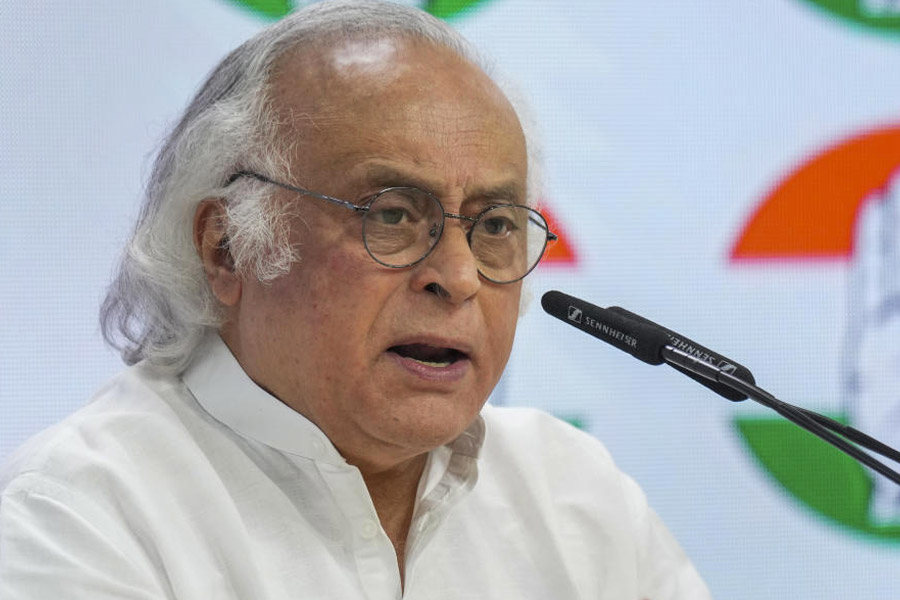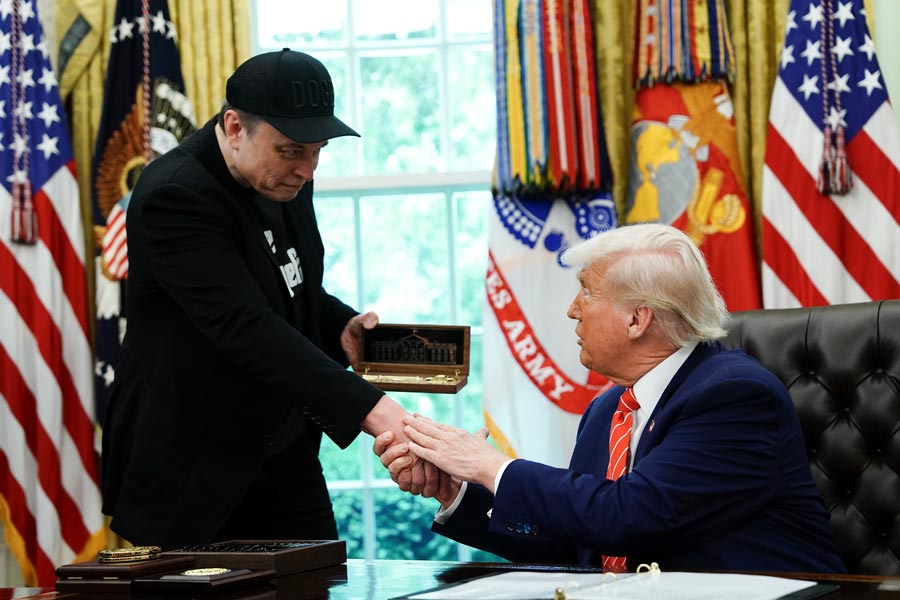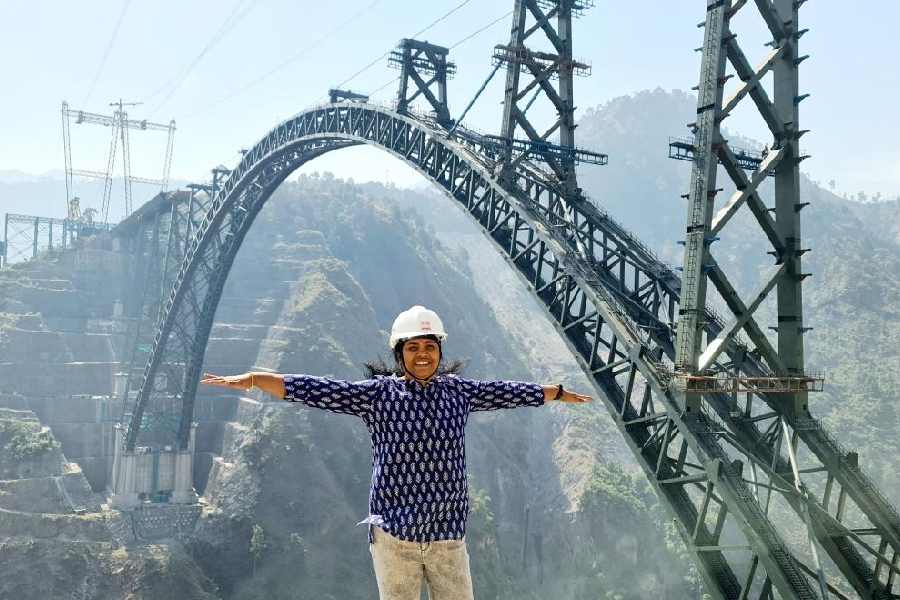 |
July 18: Hannan Mollah has returned from Delhi to vote in the third phase of the panchayat polls tomorrow. So have brothers Shaikh Hasan Ali and Yunis Ali but from Mumbai.
They would neither have made the journey nor be bracing for the detested but inevitable return trip had Mamata Banerjee been able to keep her promise to check migration that has long transformed Bengal into a national supplier of workforce.
An unmistakable monument to that promise stands tall, empty and unused off National Highway 6, near Sankrail in Howrah.
The chief minister had thrown open the two-storey, yellow building on February 4 last year as a “zari hub” but since then, the project has existed only on paper.
While inaugurating the hub, Mamata had said zari workers would be trained, if necessary, at the hub, form cooperatives, work in their own units and sell the product from the building. They would not have to migrate to earn a living, she had added.
Seventeen months on, the sector remains unorganised with low and varying pay, and Howrah’s male zari workers keep working in cities such as Mumbai, Delhi, Bangalore, Surat, Hyderabad and Chennai.
Estimates suggest that more than 5 lakh people’s livelihood depends on the local zari industry in Howrah’s Panchla, Amta I and II, Udaynarayanpur, Sankrail, Domjur, Bagnan and Shyampur blocks, which account for 2,289 gram panchayat, 438 panchayat samiti and 37 zilla parishad seats.
“Most people in this region have expertise in only one field: zari embroidery. We get jobs in Mumbai, Delhi and other cities but not in our state,” said Dinesh Hudati of Gabberia village in Panchla.
A walk around the villages in the minority-dominated Panchla block, which has the highest percentage of zari workers, revealed that most families have at least one or two migrant zari labourers in other cities. They are the breadwinners who send money that sustains the households here.
Local zari workers now lack access to the market: they buy the cloth from middlemen or trade heads known as ostagars who source it from Burrabazar in Calcutta, embroider it, and sell it back to the middlemen. The products — the sparkling wedding trousseau is much sought after — are sold in malls within the country as well as abroad, including West Asia.
But the zari workers earn a pittance in the absence of collective bargaining power. Mamata had promised to provide the workers with access to the market from the hub.
The promise unfulfilled, the solitary option for the workers is to take the trains rolling out of Howrah.
Molla, who hails from Rajkhola Patharpara village, has been working in the zari industry in Delhi for more than 20 years. He lives in a cramped room at Kotla Mubarakpur with 13 other men from Bengal and works more than 12 hours a day so he can send Rs 1,000 back home every week for his wife and five children.
“The cost of living there is very high. It’s difficult to send money back home after meeting our own needs. Still, we go there because work is available through the year, unlike in Bengal where a zari worker gets an average three months’ work a year,” said Molla.
Molla earns around Rs 10,000 a month, from which he sends around Rs 4,500 to his family. He says he wouldn’t have earned more than Rs 3,000-4,000 had he stayed back in his village.
Yunis Ali and his brother Shaikh Hasan of Gabberia have been living in Bandra, Mumbai, for at least a decade. They yearn to return home but say they don’t have a choice.
“I work in a designer bridal garments factory and earn Rs 500 to Rs 700 on a good day. Had I stayed back here, I would have struggled to make Rs 300 a day,” Yunis said.
Most of Panchla’s 2.73 lakh voters are associated with the zari industry in some way or the other. Women juggle household chores and zari work at the dhadda (the frame they use for embroidery) to support their children’s education. One woman said she earned about Rs 500 a week.
Biplab Majumdar, CPM district committee secretary, said: “There was no planning… they haven’t devised any marketing strategy. It was bound to fail.”
Local Trinamul leaders hit back. “All that the CPM does is criticise. If they are really so concerned, why didn’t they do something for the zari industry during the 34 years of their rule? We have been in power for just two years,” said Aroop Roy, Trinamul district president.
Sources in the state secretariat blamed a lack of initiative for the project’s failure to take off. “The West Bengal Industrial Development Corporation was entrusted with the job of steering the project. They have done nothing yet,” a source said.
Mujibar Rahman Mallik, who heads an organisation of zari workers in Howrah, said: “Some of us had gone to the WBIDC office in Calcutta last year to find out about the status of the hub, what we needed to do to be a part of it, and to get zari worker cards. Nobody seemed to have any answer.”
A senior WBIDC official said: “The commerce and industries minister must be aware of the present status of the zari hub. I can’t comment.”
Commerce and industries minister Partha Chatterjee said he was campaigning for the panchayat polls and would be able to answer questions relating to his department only after the election process was over.
A senior official associated with the project said: “The government should have built the park in public-private partnership after creating a cooperative of zari workers.”
The Amul model, under which thousands of small milkmen got together in a cooperative to form a company, was one of the options the state could have considered, the official said.
Some sector-specific parks in Bengal have been reasonably successful because of the role of organised players. Manikanchan, the jewellery special economic zone at Sector V, and Shilpangan, the toy park at Salt Lake, have found occupancy because of such players.
In contrast, there are few organised zari firms in Bengal. A cooperative would have helped fill the vacuum.
The Bengal government was not short on ideas but appears to have shown little initiative to follow through. An idea was mooted to project the zari zone as a tour-and-trade hub where visitors can see for themselves the craftsmanship and pick up what they like in the run-up to the wedding season.
“A hotel could have been built and families of prospective brides could have had the unique experience of seeing the trousseau being made,” the official said.










